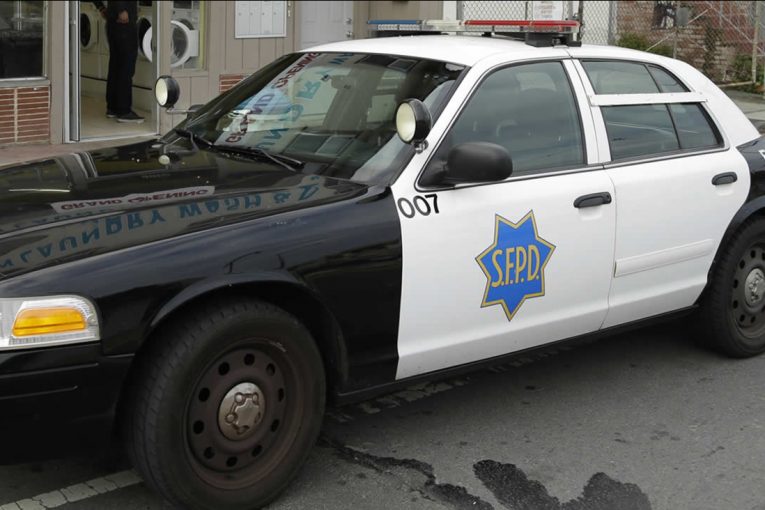
 By Sophia Barberini
By Sophia Barberini
SAN FRANCISCO, CA – In a working paper, University of California, Berkeley law students are evaluating how biased policing, ineffective legal standards, and unjust institutions have prevented structural reform in San Francisco’s Police Department.
The project is under the supervision of Clinical Professor Roxanna Altholz, and involve law students, David Maxson Harris, Sara Jaramillo, and Vanessa Rivas-Bernardy of the International Human Rights Law Clinic.
In July 2020, the San Francisco DA’s office, along with offices in Boston and Philadelphia, declared that they would be forming a “Truth, Justice and Reconciliation Commission” in order to develop a means by which victims of police brutality and prosecutorial misconduct can share their experiences with District Attorneys.
This, however, has proven to be difficult in San Francisco, as police and city officials “have historically resisted efforts to reckon with institutional racism,” according to the paper’s authors.
The writers from the International Human Rights Law Clinic plan to provide advocates of the Truth, Justice and Reconciliation Commission with resources “to assist in their efforts to form an impactful truth commission that is responsive to the local context and centers the experiences of those most affected by police violence.”
The San Francisco Police Department has often demonstrated racial profiling and has had “one of the highest rates of police shootings in the country,” according to the law students, who add that SFPD officers engage in more traffic stops, arrests, and searches in  districts that have larger Black populations.
districts that have larger Black populations.
Currently, Black San Franciscans account for approximately five to six percent of San Francisco’s population, and although they do not make up a large percentage of the city’s population, Black people “are disproportionately more likely to interact with the police and to be subjected to police brutality than are members of other racial groups,” the UCB project suggests.
Further, the project adds, 18-20 percent of SFPD traffic stops from 2018-2020 were of Black drivers, 38 percent of those murdered by police since 1985 have been Black, and 57 percent of people incarcerated in San Francisco are Black, noting these statistics only become more egregious when police interact with Black individuals that suffer from mental health issues.
Despite the disproportionate violence demonstrated toward the Black community in San Francisco by police, argue the writers, officers have often been immune to disciplinary actions. Moreover, the first time the San Francisco District Attorney’s Office brought homicide charges against an officer was in 2021.
The injustice the Black community has been forced to face because of the actions of officers has caused “[m]any affected community members [to] express deep frustration with the lack of police accountability and [to] question SFPD’s commitment to serving and protecting Black communities,” the working paper argues, adding this has led to mass distrust between Black communities and police, as many Black San Franciscans have experienced police bias.
Because of this, “Civil society has called for greater transparency and access to information, the firing of SFPD officers involved in misconduct, and the elimination of institutionalized racism and bias within the SFPD,” suggests the project, noting civil society has also advocated for more investment into Black communities through reparations and increased funding in Black neighborhoods.
Despite the calls for action and the work of social organizations to combat police brutality, there has been little change in eliminating injustice and holding police accountable. And this lack of progress is largely due to lack of clarity in use-of-force policies, and the SFPD’s “culture of dehumanization and tolerance of violence,” they write.
Further, the writers assert, the SFPD has a “culture of silence and intimidation, which discourages whistleblowers and further institutionalizes the culture of dehumanization; and the department’s hiring and training practices, which signal institutional acceptance of officers’ biases and discrimination.”
The disciplinary processes that are used to investigate allegations of misconduct in the SFPD, note the writers, “lack independence, impartiality, and transparency,” rendering disciplinary processes mostly ineffective.
In highlighting the discrimination prevalent in the SFPD and the barriers to ending that discrimination, the International Human Rights Law Clinic writers aim to provide context to the racism in policing.
They explain, “The longstanding, persistent call for structural change in policing has prompted reforms by government actors. The incremental and piecemeal nature of those reforms, however, has not effectively addressed deep and persistent questioning of the SFPD’s commitment to serving and protecting Black communities.”
The writers challenge the new Truth, Justice and Reconciliation Commission to “reflect local priorities to foster legitimacy and credibility within San Francisco’s Black communities.”


No “bias” in that stated goal, of course.
David, didn’t you just criticize a commenter in another article regarding use of “The Onion” as a source?
Unfortunately that is on us, not the working paper.
Actual quote: “SFPD data also indicate the overrepresentation of Black people in deadly use-of-force incidents. Since 1985, approximately 38% of individuals killed by the SFPD have been Black, even though the Black population has never exceeded 13% of San Francisco’s total population.7”
Wow, talk about biased, how about the lead statement! This isn’t a fact finding mission, it’s a MISSION FROM GOD.
Is this a ‘here’s your conclusion, now go prove it’ type of research?